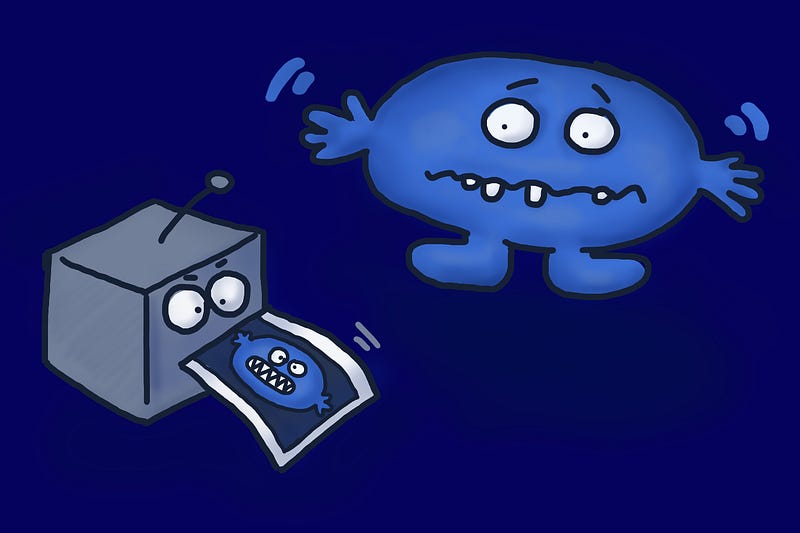The Rise of AI-Generated Imagery: Trust Issues Ahead
Written on
Chapter 1: The Threat of AI-Generated Images
AI-generated visuals, such as those produced by Midjourney and Stable Diffusion, are only the beginning of a much larger issue.

The emergence of AI-generated images could have alarming effects on society. Since the introduction of deepfake technology, both individuals and governments have become increasingly wary of manipulated images and videos. The implications are far-reaching: voters may be misled by political disinformation utilizing deepfakes; courtroom participants might struggle to discern genuine video evidence from forgeries; and individuals could find themselves depicted in compromising videos they never created, complicating their attempts to explain the situation.
While some tech experts downplay the dangers of deepfakes, arguing that photo manipulation has always existed, the real concern lies in the sheer scale of their potential misuse. Before deepfakes, editing a single image or video required extensive time and effort. Today, however, a computer can produce a convincing deepfake in mere seconds.
This rapid capability has opened the door to widespread disinformation efforts. Recently, a deepfake circulated in which Ukrainian President Zelenskyy appeared to instruct his soldiers to surrender. Although the government quickly dismissed it, one can only imagine the chaos that could ensue without a swift response.
Fortunately, deepfakes can often be identified relatively easily. The movements in these videos may appear unnatural, and body parts sometimes seem misaligned. Additionally, deepfakes typically struggle with side angles or hand gestures.
However, advancements in image generation technology could change this landscape entirely.
Section 1.1: The Power of Deep Learning Image Synthesis
Deepfakes excel at merging multiple media sources to create new content. For instance, to fabricate a video of Barack Obama saying things he never actually said, a voice actor’s audio and existing footage of Obama would be needed. These inputs would be fed into a neural network, producing a video of Obama mimicking the specified audio.
In contrast, deep learning image synthesis, such as that employed by Midjourney and Stable Diffusion, relies solely on a text prompt as input. The neural network begins with random noise and iteratively refines it until it aligns with the given prompt.
Two significant advantages make deep learning image synthesis more powerful than traditional deepfakes. Firstly, it can create something entirely new from nothing. Secondly, the input requirements for tools like Midjourney are minimal compared to those needed for deepfake creation. Generating a text prompt is quick and easy, while sourcing qualified voice actors and appropriate video clips for deepfakes is a labor-intensive process.
These factors combine to give modern image generators capabilities far beyond what deepfakes can offer.
The first video titled "AI is ruining the internet" discusses the implications of AI technology on our digital landscape and trust in online content.
Section 1.2: The Risks of Still Images
At present, we are primarily dealing with still images. While these can be visually stunning, the real concern extends beyond artistic expression. AI-generated visuals pose a threat to history, culture, politics, and the integrity of the information we consume.
To put it bluntly: the stakes involve the very fabric of human society. Our ability to live, trade, and cooperate globally hinges on shared values like honesty and trust in commonly accepted truths.
AI-generated images threaten to undermine this foundation. For example, if an AI-generated image of the philosopher Socrates appears in a history book, students might question his existence if they learn the image is fabricated. Unlike human-made illustrations, which are generally understood as artistic interpretations, AI-generated photos could blur the lines of reality.
Soon, it may be possible to create fabricated holiday pictures that never took place. What remains of the truth in such a scenario? The implications of a society unable to agree on what is real could be profound and unsettling.
If history can be distorted to trivialize atrocities like the Holocaust, the risk of repeating past mistakes looms large. This is a reality few would want to face.
Chapter 2: The Need for Regulation
We cannot allow such potent software to circulate unchecked. While I may not be an expert in AI policy, it is clear that robust regulations are necessary. We need comprehensive laws and AI systems capable of differentiating between real and AI-generated images.
Moreover, we may have to reconsider the concept of open-source software. This doesn’t mean an end to open-source projects, but it may require a system of peer review for software that could pose significant risks if released without oversight.
As we look to the future, the internet may become even more chaotic if we fail to prepare for the era of high-quality AI-generated videos.
AI technology has the potential to transform our world, but it is up to us to ensure that this change is positive.
The second video titled "AI is officially dangerous now | You can't trust your eyes anymore" explores the challenges of discerning reality in an age of advanced AI technology.